Francesco Mancini trained in Bologna. His first important commission came in 1713, when Pietro Canneti commissioned from him the frescoes for the new library of the Camaldolese monastery at Classe, near Ravenna. A recommendation from Abbot Canneti secures a commission for frescoes in the Duomo of Foligno in 1719-23 (see below). He moved to Rome in 1724 and was appointed as the principal of the Accademia di S Luca there in 1750-51.
Bevagna
St John the Baptist (ca. 1730)
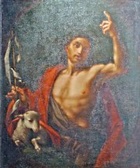
Città di Castello
St Peter and the Risen Christ (1718-9)
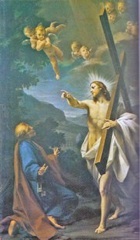
Foligno
Frescoes (1719-23)
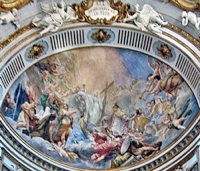
In 1719, when the remodelling of the apse of the Duomo had been completed, the notary Giustiniano Pagliarini wrote to his friend, Abbot Pietro Canneti (above) seeking advice on an appropriate artist for the execution of its frescoes. Pietro Canneti suggested Francesco Mancini, who had just completed the frescoes for Canneti’s new library at Classe. The choice was not universally popular (other proponents supported Giuseppe Nicolò Nasini and Francesco Trevisani) but Pagliarini had his way.
There followed a long discussion about the iconography of the frescoes, and the cartoons were not finally delivered until 1722. The frescoes, which were completed in the following year, depict:
-
✴St Felician in glory (in the vault); and
-
✴St Felician entrusting Foligno to Religion (in the lunette of the apse).
In the latter fresco, Religion takes the form of a figure in white holding a cross, while St Michael below spears the devil. St Felician stands to the right. St John the Baptist, on the left, draws the scene to the attention of a group of local saints that includes:
-
✴the Blessed Peter Crisci;
-
✴the Blessed Angela of Foligno; and
-
✴the Blessed Angelina of Montegiove.
There is a small figure of a kneeling donor (presumably Giustiniano Pagliarini) behind them (at the extreme left).
Work in San Salvatore (1754-5)
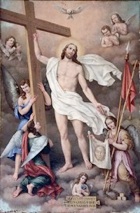
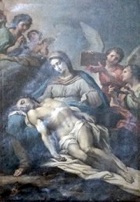
Perugia
Coronation of the Virgin (1728-30)
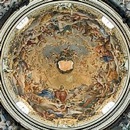
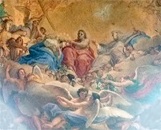
This fresco in the cupola of San Filippo Neri depicts the figures of the Trinity crowning the Virgin.
St John the Baptist (ca. 1730)
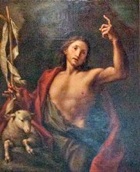
SS Anna and Joacchim with the young Virgin Mary (1732)
This altarpiece from Santa Teresa degli Scalzi, which is signed by Francesco Mancini and dated by inscription, is now in the Galleria Nazionale. A design for it is in the collection of the Fondazione Cassa di Risparmio di Pesaro in Palazzo Montani-Antaldi, Pesaro.
Return to Art in: Bevagna Città di Castello Foligno Perugia.
Return to “Foreign” Painters in Umbria.



